

How Eating Insects Empowers Women. The fried tarantula saleswomen of Skuon, Cambodia, claim the snacks they hawk have beautifying properties.
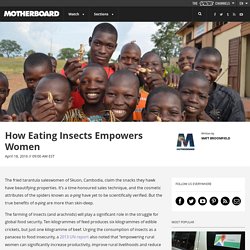
It’s a time-honoured sales technique, and the cosmetic attributes of the spiders known as a-ping have yet to be scientifically verified. But the true benefits of a-ping are more than skin-deep. The farming of insects (and arachnids) will play a significant role in the struggle for global food security. Ten kilogrammes of feed produces six kilogrammes of edible crickets, but just one kilogramme of beef. Urging the consumption of insects as a panacea to food insecurity, a 2013 UN report also noted that “empowering rural women can significantly increase productivity, improve rural livelihoods and reduce hunger and malnutrition.” Women are responsible for cultivating up to 80 percent of the crops in many agricultural nations, and yet patrilineal land laws and customs often prevent them from owning their own property. Image: Bugs for Life.
This is where NGOs can play a part. Raising mealworms. Also see feeding mealworms and how to make your own feeder Jump to: timetable and life cycle , stock, container, ventilation, temperature, light, moisture and relative humidity , food, supplements, cloth/newspaper covering, cleaning, separating out worms , colony cycling/maintenance, sifting, storage, freeze-roasting, dusting, uses, nutritional value, Problems: pupa or beetle die off | mites | moths, other worm species, raising superworms, and comments on my experiences so far.
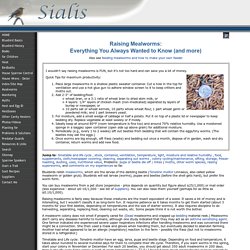
Bluebirds relish mealworms, which are the larvae of the darkling beetle (Tenebrio molitor Linnaeus, also called yellow mealworm or golden grub). Bluebirds will eat larvae (worms), pupae and beetles (before the shell gets hard), but prefer the worm form. You can buy mealworms from a pet store (expensive - price depends on quantity but figure about $25/1,000) or mail order (less expensive - about $6-16/1,000 - see list of suppliers). You can also raise them yourself (perhaps for as little as $0.10/1,000). good. Insectes. La politique de tolérance mise en place en Belgique avant le 1er janvier 2018 pourrait être prolongée après cette date à condition qu’une demande d’autorisation comme Novel Food ait été introduite avant cette date.
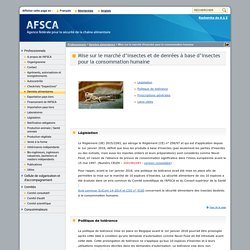
Cette prolongation de tolérance ne s’applique qu’aux 10 espèces d’insectes et à leurs utilisations respectives décrites dans les demandes d’autorisation. La tolérance vise donc non seulement l’espèce d’insecte en cause, mais aussi le type de traitement que les insectes entiers subissent et les catégories de produits dans lesquelles les insectes entiers sont incorporés.
Le service public fédéral Santé publique, Sécurité de la Chaîne alimentaire et Environnement publie sur son site Internet une liste des insectes et produits à base d’insectes qui continuent à être tolérés sur le marché belge et, par conséquent, ceux qui ne figurent pas sur cette liste ne peuvent plus se trouver sur le marché. Mealworm Farm - All. If you are looking for a way to raise your own protein cheaply, easily, and with almost no space or infrastructure, look no further than mealworms.
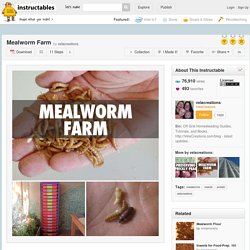
When food is scarce, you’ll want livestock that are efficient, take up small spaces, and can easily be hidden. For more information, view How To: Mealworm Farm If you're interested in seeing more of our how-to guides, please visit VelaCreations.com. You can also follow our projects through the blog or our books. Protein is one of the most expensive supplements to buy, and yet it is an essential component of any omnivore’s diet, whether they are pig, poultry, canine, human, or other. Mealworms are even a great food for people. Within this article, we will show you how to build a multi-tiered mealworm farm. FINL Vol. 9, No. 1 Mealworms: Raising Mealworms for Food. The Food Insects Newsletter Raising MealwormsMarch 1996.
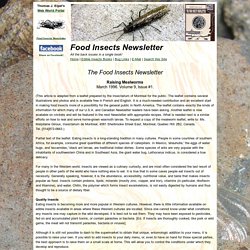
Volume 9, Issue #1. (This article is adapted from a leaflet prepared by the Insectarium of Montreal for the public. The leaflet contains several illustrations and photos and is available free in French and English. It is a much-needed contribution and an excellent start in making food insects more of a possibility for the general public in North America. Partial text of the leaflet: Eating insects is a long-standing tradition in many cultures. For many in the Western world, insects are viewed as a culinary curiosity, and are most often considered the last resort of people in other parts of the world who have nothing else to eat.